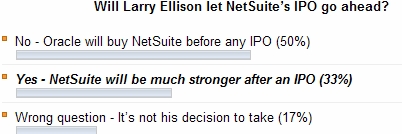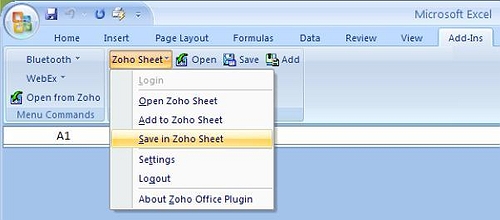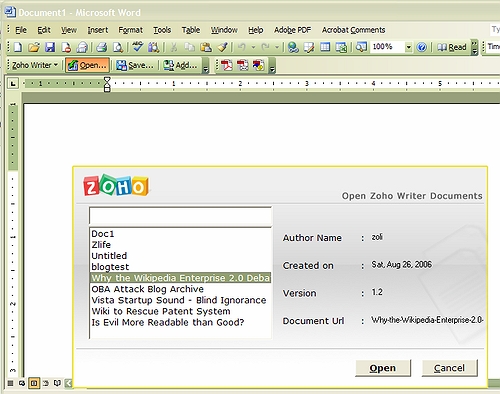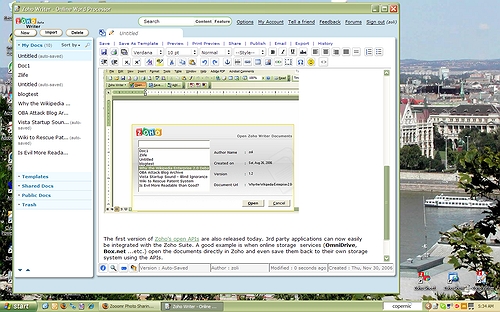 (Updated)
(Updated)
While we saw a lot of exciting products at the Office 2.0 Conference, the biggest “surprise” was not a product announcement, but FreshBooks CEO Mike McDerment letting the cat out of the bag:
“He basically announced the hidden value proposition enabled by SaaS: competitive benchmarking. All previous benchmarking efforts were hampered by the quality of source data, which, with all systems behind firewalls was at least questionable. SaaS providers will have access to the most authentic data ever, aggregation if which leads to the most reliable industry metrics and benchmarking. “
Two months later FreshBooks published the first set of raw data. It includes stats on payment methods, invoicing by email vs. regular mail, browser an operating system usage. It’s a rather limited set, and only covers two months, but it’s a start, certainly to be followed with more business-critical data. CEO Mike McDerment also takes a first cut at analyzing the data, for example:
“Browser Usage
– Internet Explorer 7 – October 5.02%, November 9.68%
– IE 6 – October 37.64%, November 36.77%
– Firefox 2.0 – October 6.61%, November 24.51%
– Firefox 1.5 – October 44.26%, November 22.07%
Analysis
Both IE and Firefox have new versions out. Clearly the Firefox community is quicker to switch to new versions. Remarkably quick in fact.”
I’m not sure I’d agree with the analysis: certainly Mike is right, the Firefox community appears to be quicker in switching to new versions, but aren’t we missing a bigger picture? I’ve dropped the data into Zoho Sheet, the web-base spreadsheet app which generated this chart:

The “bigger picture” is that IE gained market share vs. Firefox (something that as a FFox user I’m not happy with  ). Clearly, the majority of new IE7 users are not IE6 upgraders, they came from the Firefox camp.
). Clearly, the majority of new IE7 users are not IE6 upgraders, they came from the Firefox camp.
But I’m not here to discuss browser use, nor do I intend to ridicule Mike’s analysis. I picked this example to make a point: the same data set may carry different meaning to you and me. The art isn’t so much in the accumulation of data, but the proper aggregation and analysis allowing customers to benchmark themselves against industry peers – that’s where the real value is, not in raw data. So much so, that I probably wouldn’t entirely give it away; rather market it as a for-fee premium service.
SaaS providers may become the benchmark specialists themselves, but think about it: businesses will likely end up using a few systems from different providers, and if your purchasing, sales, invoicing, service ..etc data are all in different systems (and consequently aggregated by the different providers), wouldn’t you have a better competitive picture benchmarking yourself based on all those aspects? Does this mean we’ll have independent benchmarking consultants in the SaaS world? If so, will there be a secondary market for raw aggregate data?
But wait … whose data is it anyway? Trust in your data being secure, not lost, published, traded with is the cornerstone of the SaaS model’s viability. But we’re not talking about original customer data, rather its derivative – does that change the picture? There’s a potentially huge market opportunity here, yet SaaS veterans like Salesforce.com, NetSuite, RightNow …etc haven’t explored it yet. Why? I suspect for this very trust/ownership issue, which can be a potential mine-field. In the early days of SaaS it simply would not have been appropriate to address it, but now with mainstream SaaS acceptance (MicKinsey predicts 61% of $1B+ corporations will adopt one or more SaaS applications over the next year) it’s high time the industry starts addressing these issues.
Kudos to FreshBooks for being a pioneer in building the service as well as bringing a major industry dilemma to the forefront.
Update (01/04): Jeremiah is thinking along the same lines, discussing how storage companies will (?) eventually pay for your data. Yes, he talks about storage while I talk about applications, he talks about advertising while I talk about benchmarking, but in the end it’s the same: user data being processed to deliever business services.
Update (9/28/2008): Here’s another showcase of benchmarking turned into action messages on CloudAve.









 .
.
 Update: This service is no longer available.
Update: This service is no longer available.
Recent Comments